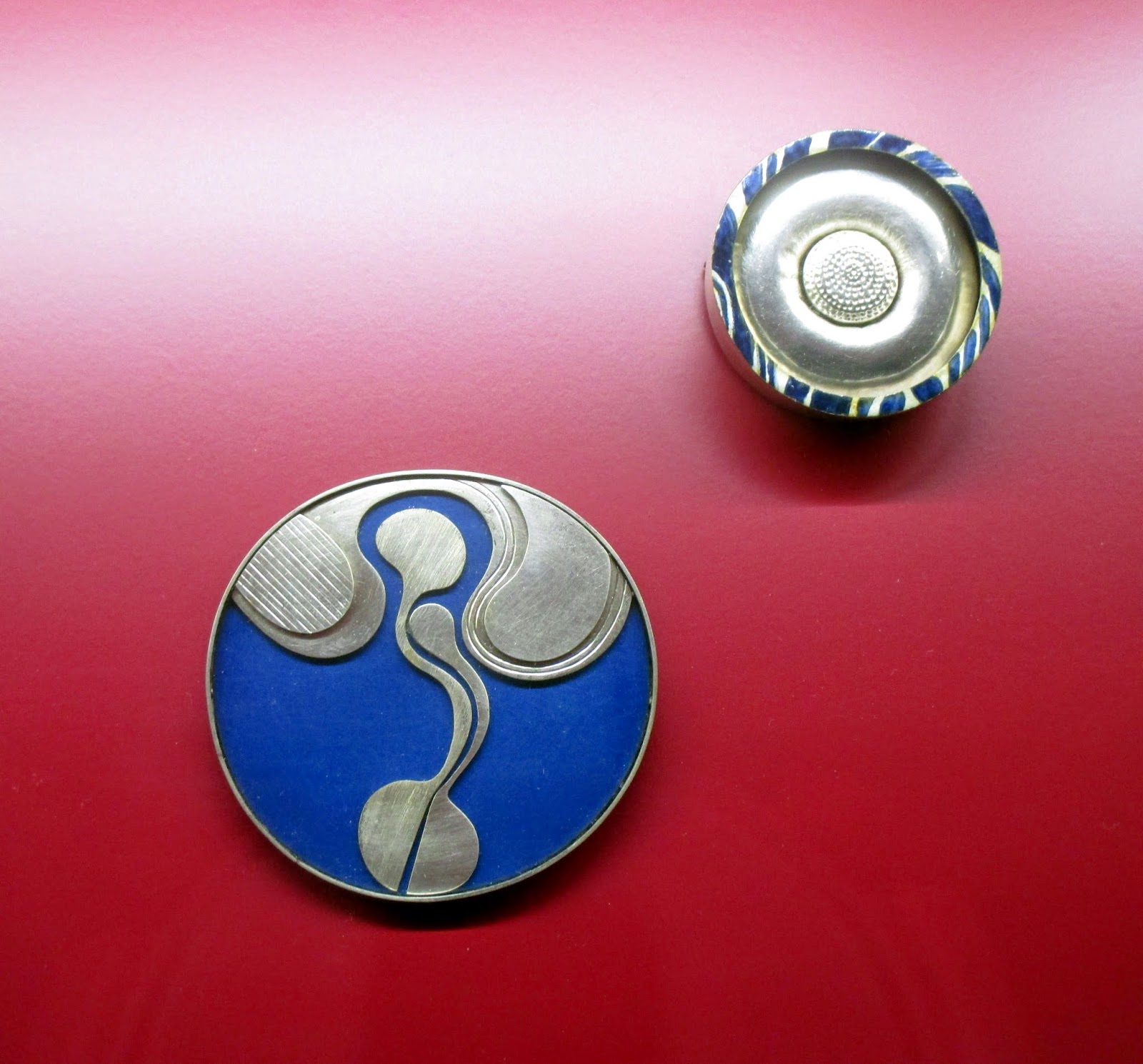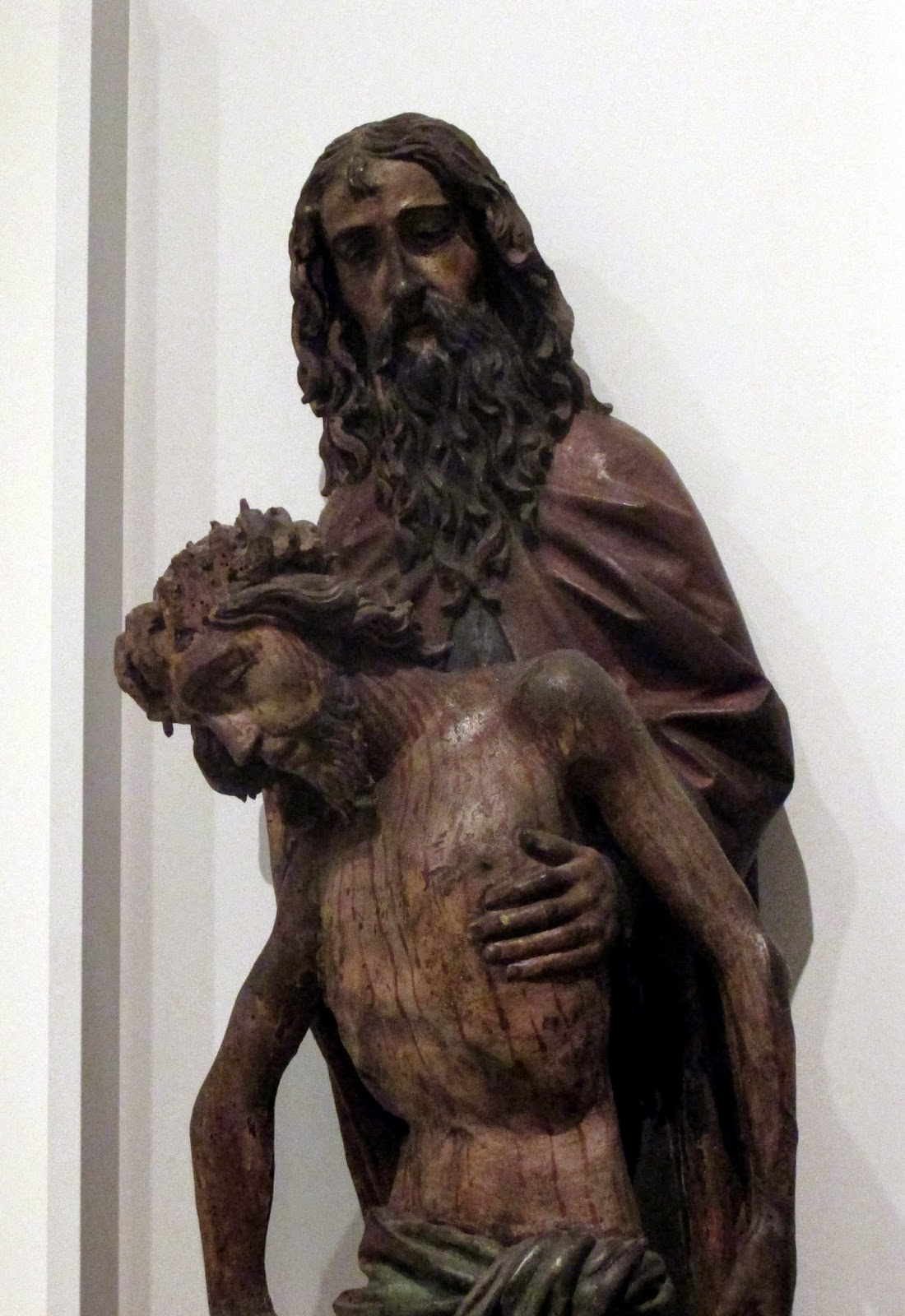THE ANGER MUSEUM IN ERFURT
FROM THE COLLECTION OF MEDIEVAL ART
Medieval Shield
These extraordinary religious reliefs (below), altarpiece sculptures, reveal the admixture of state authority and religious belief, embodied in Virgin Mary's who look like Queens and Bishops who look like Emperors, and they hold cities in their hands, cities they have founded, monasteries and charter-houses they have established, the objects in their hands are their legacies to the people and the land.
MODERNISM IN FRESCO
Erich Heckel, Stages of Life Mural (1922-24) Erich Heckel’s “Stages of Life” Mural at the Angermuseum, Erfurt.
The Anger museum's prize piece is the mural by Erich Heckel, painter and cofounder of the Expressionist ‘Die Brücke’ movement. A commission from Museum Director Walter Kaesbach and the financial support of Shoe Manufacturer Alfred Hess made it possible for Erich Heckel to paint the mural “Stages of Life” or “Life Steps” at the Anger Museum between 1922 and 1924 in a small room especially dedicated for the purpose.
The mural is not only one of the most important works of German Expressionism but is also the only mural painted by Erich Heckel. The mural envelops the entire room, confronting a ‘World of Men’ on one side and a ‘World of Women’ facing it across the room, both on the far sides of the trapezius-like structure. On one of the side-walls can be seen other allegorical figures representing ‘The First Steps’, ‘Separation’, and ‘Friendship’. On the opposite wall are to be see ‘Sad Moments’, ‘Youthful Deeds’, ‘Communion’ and ‘Education’. The allegorical figures include members of the Stefan George circle which was friendly with the Dresden painters known as ‘Die Brücke’, of which Erich Heckel was one of the most prominent members.
The Anger museum's prize piece is the mural by Erich Heckel, painter and cofounder of the Expressionist ‘Die Brücke’ movement. A commission from Museum Director Walter Kaesbach and the financial support of Shoe Manufacturer Alfred Hess made it possible for Erich Heckel to paint the mural “Stages of Life” or “Life Steps” at the Anger Museum between 1922 and 1924 in a small room especially dedicated for the purpose.
The mural is not only one of the most important works of German Expressionism but is also the only mural painted by Erich Heckel. The mural envelops the entire room, confronting a ‘World of Men’ on one side and a ‘World of Women’ facing it across the room, both on the far sides of the trapezius-like structure. On one of the side-walls can be seen other allegorical figures representing ‘The First Steps’, ‘Separation’, and ‘Friendship’. On the opposite wall are to be see ‘Sad Moments’, ‘Youthful Deeds’, ‘Communion’ and ‘Education’. The allegorical figures include members of the Stefan George circle which was friendly with the Dresden painters known as ‘Die Brücke’, of which Erich Heckel was one of the most prominent members.
PAIDEIA
MODERNISM
Paul Baum, Neighborhood of Weimar (1888)
Sibylle Prange, Grenzgang (Walking on the Edge), 1997
Landscapes of the German Romantic and pre-Modernist Genre
Heinz Zander, In the Caucasus. 1985
Some of these landscape paintings of the Victorian Age and the Romantic are of spectacular aesthetic beauty, though insipid in content. The northern artists went to the Mediterranean to find landscapes of Beauty and beautiful landscapes to portray them. The skill in representation is also a form of bourgeois mannerism.
Louis Gurlitt, Gulf of Sorrento (1857)
Friedrich Nerly, San Giorgio Maggiore in Venice by Moonlight (ca. 1850)
Friedrich Nerly, Valley of Cadore in the Italian Alps (1883)
GERMAN REALISM
Johann Erdmann Hummel, Portrait of his daughter Marie (1828)
Johann Erdmann Hummel, Portrait of his mother Anna Martha Hummel (1805)
ROMANTICISM AND BIEDERMEIER AT THE ANGER MUSEUM, ERFURT
Eduard Magnus, Portrait of Agathe Nerly, Wife of the Painter Friedrich Nerly (1850)
These interiors, these woodcraftings, remind me of the beautiful descriptions of objects and of craftsmanship in Adalbert Stifter's 'Der Nachsommer.' The wooden floors in particular remind me of the description of the floors at the Rosenhaus of Baron von Risbach. And the description of the description of these floors to the narrator's father, back in Vienna.
ROCOCO AND BIEDERMEIER INTERIORS AND FURNITURE, AT THE ANGER MUSEUM, ERFURT
THE PERCEPTION OF THE PERCEIVER: Myself at the Anger Museum in Erfurt
View of the City of Erfurt in the time of Goethe
ROMANTICISM
Christian Friedrich Tieck, Bust of Karl Friedrich Schinkel, the Prussian Architect responsible for most of the Museeninsel in Berlin (1819-1835)
Rococo interior
THE DISPLAY OF THE COLLECTIONS
View of the Arts and Crafts Gallery
ART NOUVEAU
GERMAN BEER MUG ART
WOODCRAFTS
View of the city of Erfurt in inlaid wood.
GERMAN PORCELAIN AND CERAMICS
View of the City of Erfurt. Meissen Porcelain
THE WHEEL OF ERFURT
EXTERIOR OF THE ANGER MUSEUM COURTYARD
MEDIEVAL ART COLLECTION
MEDIEVAL RELIGIOUS ART



































































No comments:
Post a Comment